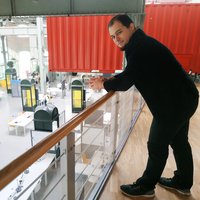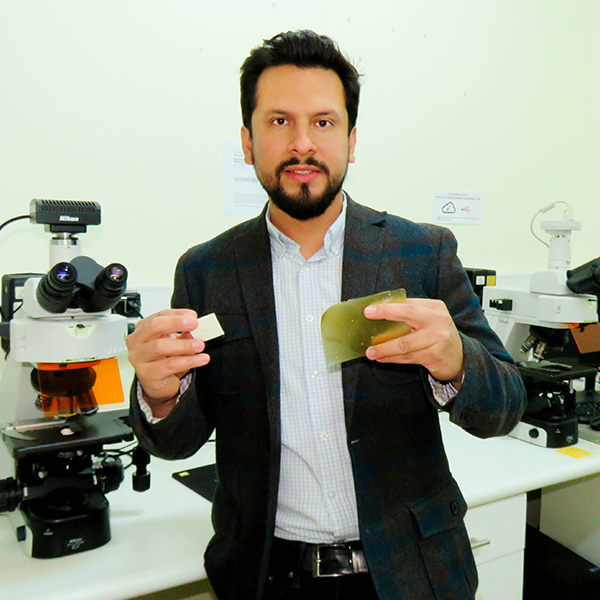In less developed countries, one of the most common and most feared complications of diabetes is foot ulcers. According to several scientific researches, it is estimated that 15% of diabetes patients will suffer this type of injury at some point in their life, which represents an important cause of disability for this increasingly numerous population. 85% of limb amputations in diabetic people are preceded by the onset of ulcers.
To minimize this problem, biotechnologist Juan Carlos Forero has invented ChitoCure, a dressing that accelerates the regeneration of ulcerated tissues. Thanks to this advancement, this Colombian researcher residing in Chile has become one of the Innovators Under 35 Latin America 2018 of MIT Technology Review.
ChitoCure was born from the work that Forero did while completing his doctorate at the Pontificia Universidad Católica de Valparaíso (Chile). His research sought to produce implants capable of stimulating the regeneration of bone tissue. However, during the biosecurity trials he discovered an unexpected application for the material from which the implants were made. "This device, which was made for bones, caused the skin to regenerate much faster than normal," the young innovator recalls.
"There are already many bandages for the care of skin wounds in the market, the difference is that this prototype has the ability to regenerate the skin, not only cure it. When there is an ulcer, a biofilm of bacteria is created. The majority of the products kill these bacteria and allow the wound to heal, but they do not regenerate the tissue," Forero states.
This ability is the result of the conjunction of the properties of two elements. On one side is the matrix of the bandage, which is chitosan. It is a biomolecule obtained from the shells of crustaceans, which is a very abundant waste product in the fishing industry of Chile. On the other side, there are the nanoparticles that Forero has incorporated into the matrix that provide a characteristic regenerative function.
"The immune system recognizes the nanoparticles and begins to secrete elements that accelerate the regeneration of skin tissue," Forero says. After a couple of weeks, the wounds covered with ChitoCure present between 60% and 70% of the surface covered with regenerated tissue, compared to just 10% that is achieved with bandages containing the chitosan matrix but without the nanoparticles.
The general manager of the Technological Park of the Central Coast (Argentina), Amadeo Cellino, and jury member of Innovators Under 35 Latin America 2018, highlights the importance of the social impact that Forero’s project will have when it is commercialized. At this moment, the young innovator is making changes to the prototype to obtain a patent as well as planning new clinical studies.




